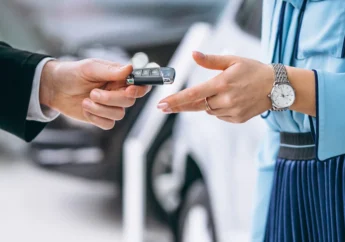Could a Self-Driving Fleet Meet Your Company’s Transportation Needs?
by Arina Smith Automotive Published on: 01 September 2018 Last Updated on: 10 September 2018

Companies like Waymo are currently testing fleets of self-driving taxis, and in some cities, riders have already had the pleasure of hailing self-driving Ubers, even if these programs were ultimately terminated over safety concerns. Self-driving cars may yet have some bugs that need to be worked out, but by 2020, experts predict that individuals may be able to hail an autonomous ride whenever they want, even out in the country. Some say the driverless car will even do away with car ownership.
But autonomous-driving vehicles aren’t just poised to change how private individuals get their transportation needs to be met. They’re also ready to revolutionize commercial fleet transportation. Fleets of self-driving trucks, delivery vans, and other commercial vehicles may take to the nation’s roads one day soon, making the fleet industry safer, greener, and more productive.
Self-Driving Fleets Are Safer :
So far, self-driving car experiments have encountered setbacks. Some of these vehicles have been involved in accidents with pedestrians, cyclists, and other motorists. But, ultimately, autonomous-driving vehicles are expected to make the roadways safer, reducing motor vehicle deaths significantly – at least, according to Sen. John Thune (R-SD). Senator Thune chairs the Senate Committee on Science, Commerce, &Transportation. Last year, he asked the Senate to authorize the Department of Transportation to set performance standards for autonomous vehicles weighing more than 10,000 pounds.
The National Highway Traffic Safety Administration (NHTSA) reports that 94 percent of motor vehicle accidents can be chalked up to human error. Take the humans out of the equation, and you’ll be reducing accidents by the thousands. Trucks get into accidents at a rate of 222 every 100 million vehicle miles, or the amount of travel performed by all vehicles within a particular geographic region during a given year. Automated fleets are expected to drop that statistic to just eight truck-related accidents per 100 million vehicle miles by 2040.
Self-Driving Fleets Save Fuel :
It’s still up in the air whether a transition to fully-autonomous vehicles across the board will reduce overall fuel consumption, or increase it, but it is known that autonomous-driving fleets use less fuel than human-driven trucks. That’s largely because these fleets are so much more efficient than traditional, human-driven fleets. Fewer accidents mean less highway congestion, and driverless fleets can be platooned, or electronically coupled so that they brake and accelerate simultaneously. Autonomous systems allow these trucks to drive much closer together, freeing up more of the road for other traffic, and can even allow them to optimize their routes in real time to avoid poor road conditions, construction, congestion, or other obstacles.

Because fleet vehicles will be able to drive closer together, lane capacity will increase, allowing more vehicles to safely travel the roadways. Platooning is expected to safely increase lane capacity, or the number of vehicles that can travel in a lane per hour, up to 500 percent, and when the majority of vehicles on the road are autonomous, lane capacity may increase by as much as 80 percent.
As a result of these efficiencies, commercial fleet vehicles, including light trucks, buses, and heavy-duty freight vehicles, will be as much as 18 percent more fuel efficient by 2050. Autonomous fleet vehicles could be up to 25 percent lighter than human-driven vehicles by 2030, for fuel savings of an additional seven percent.
Self-Driving Fleets Increase Human Productivity :
With more efficient operation and optimized routes, autonomous fleets could allow for faster shipping and transport. However, these fleets can also do a lot to make human employees more productive. Chances are that autonomous trucking fleets won’t be truly driverless anytime soon; a human being will still be needed at the controls in case something goes wrong. That’s good news for anyone who depends on the fleet industry for his or her paycheck.
But that human being behind the wheel will no longer have to focus all of his or her energy and attention on driving the truck. He or she will be able to complete paperwork, participate in teleconference meetings, and complete other fleet-related tasks.
The fleet industry is expected to change drastically as self-driving vehicle technology becomes commonplace. Will your company use self-driving fleets to meet its transportation needs in the future? The answer is almost certainly yes.
Read Also :







































































































